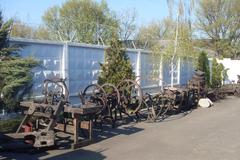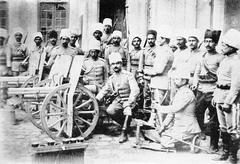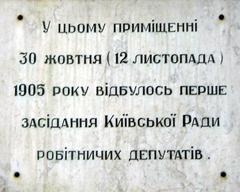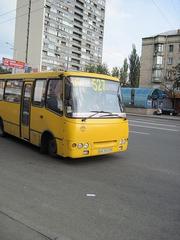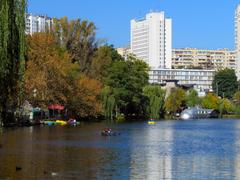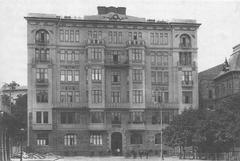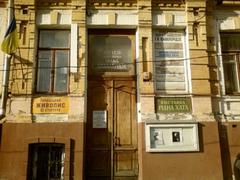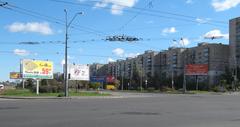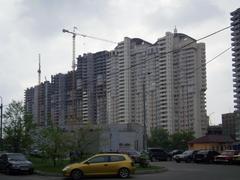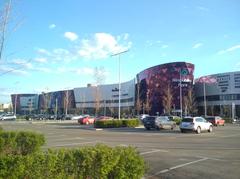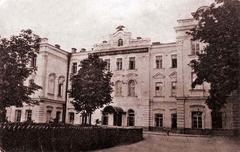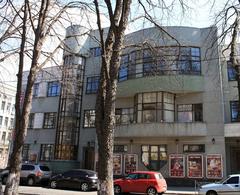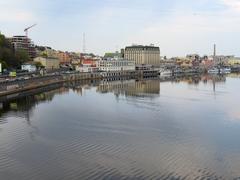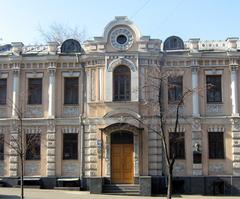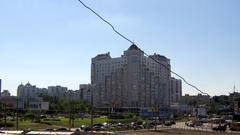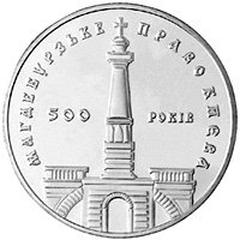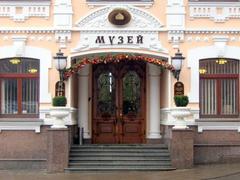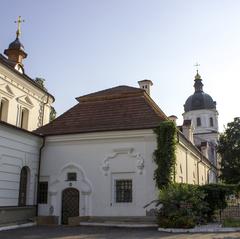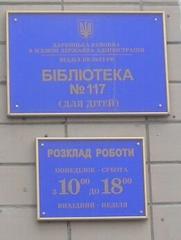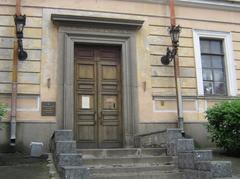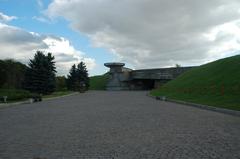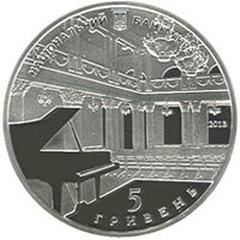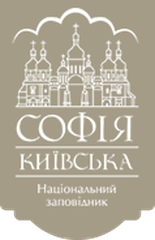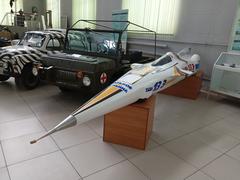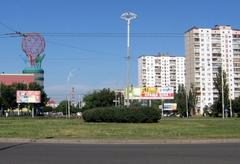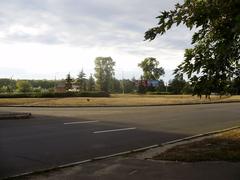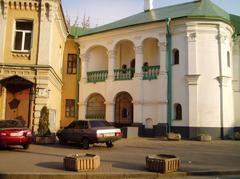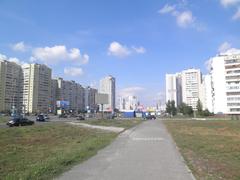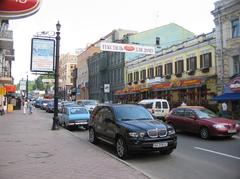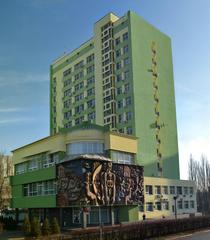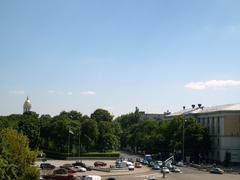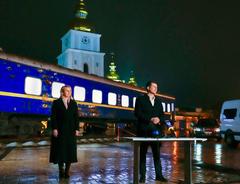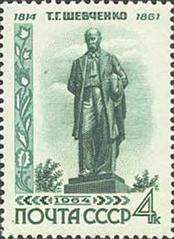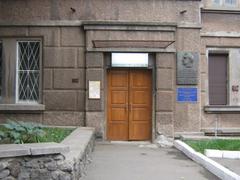
Museum of Useless Things Kyiv: Visiting Hours, Tickets, and Complete Visitor Guide
Date: 14/06/2025
Introduction
In the heart of Kyiv, the Museum of Useless Things offers a distinctive and whimsical perspective on Ukraine’s material culture. Unlike conventional museums, its collection is dedicated to everyday objects that, though obsolete, shed light on the nation’s social, technological, and cultural evolution. Whether you’re a history enthusiast, a sustainability advocate, or a curious traveler, this guide provides all the essential information about the museum’s origins, significance, visiting hours, tickets, accessibility, and tips for an enriching visit.
Table of Contents
- Introduction
- History and Cultural Significance
- Collection Highlights and Thematic Exhibitions
- Community Engagement and Educational Programs
- Practical Visitor Information
- Visitor Tips and Safety
- Nearby Attractions and Amenities
- Frequently Asked Questions (FAQ)
- Conclusion and Recommendations
- References
History and Cultural Significance
Origins and Purpose
The Museum of Useless Things emerged in the early 2010s, founded by a Kyiv engineer and collector driven by the desire to preserve the overlooked artifacts of daily life. Initially a private initiative, the museum expanded through community contributions, eventually welcoming the public to interact with its ever-evolving collection. Housed within the Kievgorvtorresurs recycling plant, the museum bridges nostalgia and critical reflection, inviting visitors to reconsider the value of the mundane.
Social Commentary and Ukrainian Identity
By focusing on “useless” objects—ranging from Soviet-era electronics to quirky household gadgets and failed inventions—the museum highlights the rapid pace of technological change and encourages dialogue on consumerism and planned obsolescence. Its ironic and playful presentation resonates with Ukraine’s tradition of humor as a tool for resilience and reflection. The museum also fosters intergenerational connections, allowing older visitors to share memories with younger generations, thus preserving oral histories and cultural continuity.
Educational Mission
Beyond its humor and irony, the museum provides educational value, attracting school groups, university students, and families interested in the evolution of technology and everyday life in Ukraine. Interactive exhibits foster curiosity and hands-on learning, making history accessible and engaging for all ages.
Collection Highlights and Thematic Exhibitions
Scope and Thematics
The museum’s dynamic collection comprises more than a million items, most sourced directly from the recycling plant. Exhibits are organized thematically, with regular rotations and special exhibitions that keep the museum relevant and engaging.
Key Exhibits
- Soviet-Era Electronics: Radios, televisions, cassette players, and computers showcase the technological ambitions and limitations of their time.
- Mechanical Calculators and Office Tools: Typewriters and calculators illustrate the evolution of work and communication.
- Household Curiosities: Items such as manual egg beaters, hand-cranked washing machines, and rotary phones reflect changing domestic routines.
- Industrial Relics: Rusty machines, factory equipment, and medical instruments underscore Kyiv’s industrial heritage.
- Ephemeral and Pop Culture Artifacts: Soviet-era toys, ration cards, personal letters, and advertisements provide a window into daily life and popular culture.
- Failed Inventions: Prototypes and commercial flops highlight the risks and creativity inherent in innovation.
- Art from Recycled Materials: Installations by local artists merge environmental consciousness with creative expression.
Interactive and Educational Features
Visitors are encouraged to touch and interact with many objects, guess their original functions, and participate in guided tours and workshops on upcycling and sustainability (Nomadic Matt). The museum’s labels often include witty or philosophical commentary, prompting visitors to reflect on the meaning of “usefulness.”
Community Engagement and Educational Programs
The museum thrives on community participation. Locals often donate objects along with their stories, ensuring the collection remains diverse and representative of Kyiv’s evolving urban life. Regular workshops and temporary exhibitions focus on topics such as creative reuse, environmental sustainability, and the history of technology. Educational initiatives include school visits, hands-on sessions, and special events requiring advance registration (Kyivmaps).
Practical Visitor Information
Location and Accessibility
- Address: 112 Yevhena Malaniuka Street, Dniprovs’kyi District, Kyiv, Ukraine
- How to Get There: The museum is accessible via metro (nearest station: Darnytsia), with local buses and taxis available. Enter the address into any navigation app for accurate directions.
- Accessibility: The museum is on the ground floor and generally accessible to visitors with limited mobility, though some spaces may be narrow. Contact staff in advance for specific needs.
Visiting Hours
- As of June 2025: The museum is temporarily closed. Always confirm current opening status before your visit by calling +380 (44) 517-39-63 or checking Kyivmaps.
- Typical Hours When Open: Daily, 10:00 AM – 6:00 PM; occasional closures on public holidays and during special events.
Tickets and Admission
- Admission: Modestly priced; admission is often free or by donation to support the museum’s educational mission.
- Tickets: Purchase on-site or, for groups and special events, reserve in advance by phone or online. Discounts may be available for students, seniors, and groups.
Guided Tours and Photography
- Guided Tours: Available upon request and recommended for deeper insight. Advance booking is advised, especially for educational groups.
- Photography: Generally permitted, but always check with staff during workshops or special exhibitions.
Visitor Tips and Safety
- Plan Ahead: Confirm the museum’s operational status before visiting.
- Language: Most labels are in Ukrainian; staff may assist in English or Russian. A translation app is helpful.
- Duration: Plan for 1–2 hours, especially if joining a tour or workshop.
- Safety: Follow local safety recommendations and be aware of any regional security updates (Visit Ukraine Today).
- Payments: Small museums may prefer cash (UAH), though cards are widely accepted in Kyiv.
Nearby Attractions and Amenities
- Nearby Museums: The Museum of Intimate Speech is just meters away.
- Parks: Victory Park and RoboUA Park Lakes offer relaxing green spaces.
- Dining: Cafés and restaurants like Tais Place and Lisopylka are within walking distance.
- Souvenirs: Periodic museum events offer handmade items; for broader options, visit Folkmart.
Frequently Asked Questions (FAQ)
Q: What are the Museum of Useless Things’ visiting hours?
A: Usually 10:00 AM – 6:00 PM, but currently the museum is temporarily closed. Always verify before visiting.
Q: How much is admission?
A: Modest or by donation; group tours and workshops may require advance booking.
Q: Is the museum accessible for visitors with limited mobility?
A: Yes, but contact the museum for specific accessibility concerns.
Q: Are guided tours and workshops available?
A: Yes, often requiring prior arrangement.
Q: Can I take photos?
A: Photography is generally allowed, but ask during special events.
Conclusion and Recommendations
The Museum of Useless Things in Kyiv is a unique cultural destination that transforms discarded objects into stories of resilience, innovation, and community memory. Its engaging exhibits, interactive approach, and commitment to sustainability make it a highlight among Kyiv’s historical sites. Although temporarily closed as of June 2025, prospective visitors should monitor official channels for reopening news and plan their visit to include nearby attractions, workshops, and guided tours.
Enhance your experience by downloading the Audiala app for audio guides, insider tips, and up-to-date cultural recommendations. For more information, consult official tourism resources and stay connected with the museum’s community online.
